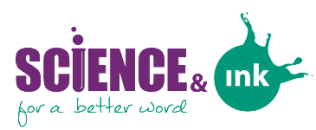Intravenous (IV) sodium bicarbonate and oral acetylcysteine were ineffective at preventing kidney injury and death after angiography in patients at high risk of renal complications.
Marielle Fares, Pharm.D
January 18, 2018- In patients undergoing contrast-assisted angiography and at high risk of kidney injury, periprocedural treatment with intravenous sodium bicarbonate or oral acetylcysteine did not prevent death or renal disease progression and did not reduce the need for dialysis, a randomized trial showed.
Steven S. Weisbord, MD, with the Veterans Affairs (VA) Pittsburgh Healthcare System and the University of Pittsburgh School of Medicine in Pittsburgh, and the PRESERVE trial investigators reported their findings in the January 16, 2018 issue of the New England Journal of Medicine.
The use of contrast material during angiography increases the risk of acute kidney injury, renal disease progression and death. Intravenous sodium chloride 0.9% has been the standard of treatment care angiography. Despite a lack of evidence from clinical trials, sodium bicarbonate and oral acetylcysteine have also been widely used in angiography to prevent renal cell injury and death. This study compares sodium bicarbonate with sodium chloride and acetylcysteine with placebo in high-risk patients undergoing angiography.
This is the largest trial to date in terms of the numbers of enrolled patients receiving sodium bicarbonate and acetylcysteine. Patients enrolled in the study were scheduled to have coronary or non-coronary angiography. Other inclusion criteria were stage 3 or 4 chronic kidney disease with an estimated glomerular filtration rate (eGFR) of 15 to 59.9 ml per minute per 1.73 m2 of body-surface area, or stage 3A CKD with diabetes mellitus (eGFR of 45 to 59.9 ml per minute per 1.73 m2). There were 5711 eligible patients for inclusion, but only 4993 were randomly assigned to receive IV 1.26% sodium bicarbonate or 0.9% sodium chloride, and oral acetylcysteine or placebo capsules.
The primary endpoint was a composite of death, the need for dialysis and a 50% increase in serum creatinine from baseline, measured at 90 to 104 days after angiography, and confirmed by repeat measurement after 14 days.
There was no significant difference was reported among all groups in the primary composite endpoint. The primary endpoint occurred in 4.4% in the sodium bicarbonate group compared with vs 4.7% in the sodium chloride, and in 4.6% in the acetylcysteine group vs 4.5% in the placebo group.
“In patients with impaired kidney function who were undergoing angiography, we found that periprocedural intravenous isotonic sodium bicarbonate showed no benefit over intravenous isotonic sodium chloride with respect to the risk of major adverse kidney events, death, or acute kidney injury. In addition, we found no benefit for the oral administration of acetylcysteine over placebo in decreasing the same risks,” Dr. Weisbord and colleagues concluded.
This study was supported by the US Department of Veterans Affairs Office of Research and Development and the National Health and Medical Research Council of Australia.
New England Journal of Medicine. Published on November 12, 2017

Quality posts is the crucial to interest the users to go to see the web site, that’s what this website is providing. Druci Levey Knitter
La lecture de votre article a été très agréable. Blair Val Edrock